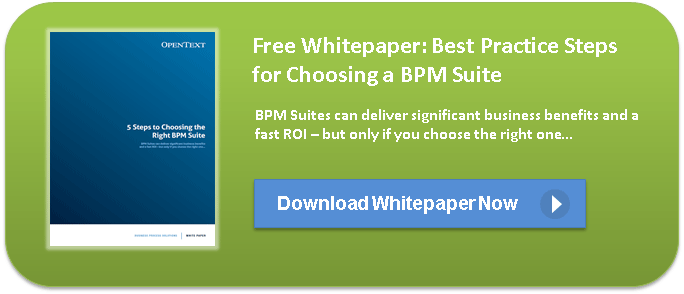Unstructured vs. Structured: Integrating Intelligence for Better BPM

Is Your AI and Automation Strategy Right for You?
Delays are unacceptable to modern consumers. Technology has transformed consumer expectations, leading to the expectation of quick response in brand interactions. For organizations with difficulty integrating unstructured and structured information, transformation of business process management (BPM) practices can be critical for exceeding client expectations and reducing chaos surrounding informational assets.
What is Structured and Unstructured Information?
Structured information is highly-organized and readily accessible through structured query language or other forms of search. It is most often housed in a relational database, enterprise resources planning (ERP) software or customer relationship management tool (CRM). For many organizations, structured informational assets may form the majority of information used on a day-to-day basis to inform business decision making and analysis.
Unstructured information is more difficult to define, and at most organizations, far more common than structured data assets. It may be generated by humans, connected internet-of-things (IoT) devices or web activities. It may consist of social media content, web analytics, email communications, digital memos, chat logs, video files, audio files or any other form of informational asset that's not readily housed in a relational database. Unstructured data assets are growing rapidly at most organizations, and looking towards digital transformation is necessary to leverage the potential of this intelligence.
Why Integration of Structured and Unstructured Information is Necessary
Globally, unstructured data assets are growing at an astounding rate. As user adoption of mobile technologies and the prevalence of sensors and other connected devices continues to increase, the result is a series of abundant, fast-moving streams of unstructured big data. Combining both unstructured and structured data assets in analysis for total transparency is a real challenge for organizations worldwide. If data assets are not securely stored, available and easy to access, organizations will struggle to understand the state of their market, customers and key opportunities for gaining competitive advantage.
Simply put, organizations that lack oversight into unstructured data resources lack oversight. If your unstructured assets are not readily accessible and shareable, organizations will have trouble driving competitive advantage or meaningful analysis from these assets. Transforming BPM to ensure unstructured assets can have just as significant of an impact on decision-making as structured resources, and is critical for organizations to get the whole picture.
Conclusion
At best, unstructured data that is poorly-stored or difficult-to-access can represent an untapped advantage for immense cost-savings and profit. At worst, unstructured data that is poorly managed can yield enormous security risks for organizations. Shifting business processes to support secure and sufficiently available unstructured data assets can demand significant transformation in technologies and thought processes for companies. However, achieving transparency in both structured and unstructured data assets can allow organizations to achieve better oversight than ever before.


